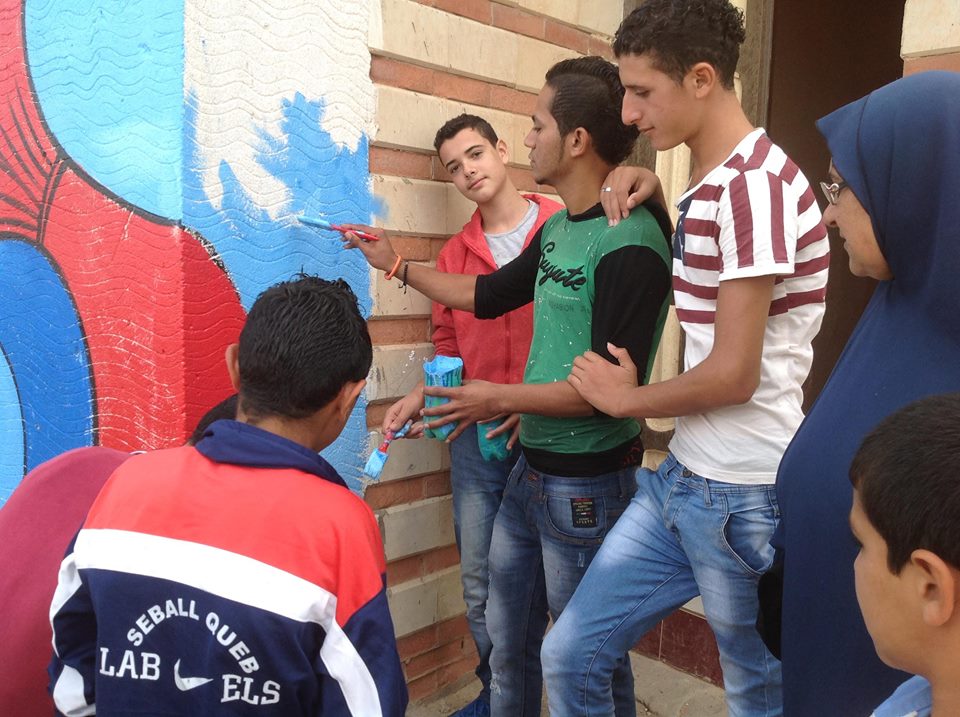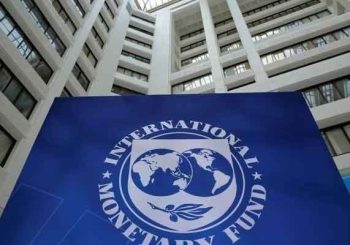But the good news is that a recent decision by the governorate of Kafr El Sheikh, to which Borg El Borollos belongs, was issued to turn the little village into a city. The long-awaited decision was met with tears and cheers by people who believe that that this could be a turning point for the future of their hometown.
By Ahmed Kafafi. Photos courtesy of Ibrahim Shalabi and Abdel Wahab Abdel El Mohsen Foundation for Culture, Arts and Development
On November 4, 1956, at the peak of the escalating battle of Port Said, a British destroyer and several French warships – shielded by an air force – attempted to invade Egypt through the Strait of Borollos. The Strait, which links central Egypt with the Borollos Lake, is part of the Borollos province, the capital of which is the coastal city of Balteem, and is a strategic entry point into Egypt from the north.
At 2 am, as the strait was enveloped in darkness, a small Egyptian unit consisting of three military torpedo boats was on the ambush, even though the fighters knew that they were dealing with a superior rival. The British-French alliance was taken by surprise as the small boats suddenly sent up a big cloud of smoke that blocked visibility; the small boats then began shelling and gunning the enemy’s force. In a matter of minutes, the suicidal operation was accomplished and the entire invading force was devastated. But almost all the Egyptian fighters were killed by the air force, which pursued them until dawn. Although more than five decades have elapsed, El Borollos continues to take pride in this battle, which was key to Egyptian resistance during the 1956 tripartite aggression, and November 4 is celebrated as a national day each year.
But it seems that El Borollos has always been the land of heroic deeds; more than one millennia ago, Roman armies attempted to undertake a similar venture. Much like the alliance that tried to re-colonize Egypt in 1956 through the strait, the Romans came with a large fleet to seize Egypt after losing it to the Arabs. The attempted invasion took place during the reign of the Omayyid Caliph Mo’awya, and resulted in a confrontation between the Arab and Roman armies around the village of ‘Anaber, in which the Romans were defeated.

Although El Borollos has been a key site of resistance throughout Egyptian history, it has received scant attention in terms of development. The main village of Borg El Borollos, a small peninsula tucked between the lake and the sea, is a fishing hub populated by a small community of fishermen. Although hailed as “the Bride of North Delta,” ironically, all the charming features that used to make it a blooming bride have faded away. What remains are the fishermen’s colorless houses set against the waters of the sea, the lake and the strait, but the atmosphere is characterized by silence and isolation. The unpaved Cornish road is marked at the beginning by a cluster of old wooden coffee shops and ends with a mosque and some military barracks. The locals are tethered to a social circle that is torn between poverty and a precarious livelihood that relies on the vagaries of the sea.
But the good news is that a recent decision by the governorate of Kafr El Sheikh, to which Borg El Borollos belongs, was issued to turn the little village into a city. The long-awaited decision was met with tears and cheers by people who believe that that this could be a turning point for the future of their hometown. According to officials, the change was necessary due to the fact that the population of the village has swelled to more than 100,000, and, according to municipal laws, should therefore be provided with the facilities of a city. The change is also in line with the increase in the size of the Kafr El Sheikh governorate, which is expected to increase the number of cities under its jurisdiction in line with its growth. Talking to some of the locals, they stressed that even though the change is still only on paper, it will encourage improvements that should result in urban development.
“Borg El Borollos has turned into a city only in name. The small city, as well as the rest of the governorate of Kafr El Sheikh, need a vision to exploit their full potential,” says Mohamed Seif of the Kafr El Sheikh Local Council. He continues: “It is good that the place is now classified as a city, but, in my opinion, that change should not have taken place until the services were introduced. [In reality], Borg El Borollos is still a small impoverished village that remains deprived of a city’s basic services, and I see no plans on the horizon to reverse the situation there in spite of the high potential. The place can be turned into a posh sea resort that offers all types of water sports. The fact that the area provides a substantial percentage of Egypt’s seafood should qualify it to become a big fishing center, and this is not considering other resources in the area, which include boat and ship building.”

It might be too early to determine how development will unfold, but, according to news reports that appeared at the end of 2014, plans are in full swing to build new schools, develop El Borollos Hospital, restructure the Cornish, and build the infrastructure for both electricity and water. The budget is open and the project is in line with a vision to develop Egyptian villages and cities.
But the major problem in Borg El Borollos is securing a decent living for the small, destitute population. “It is the main city in the lake district and that development begins in Borg El Borollos is a good omen for the rest of the villages,” says Said Shehata, a poet from Menyat El Morshed, a neighboring village that is also located on the Borollos Lake. “We hope that the new development would, besides providing services and infrastructure, create steady jobs for the villagers in the area who have been suffering from the monopoly of elite families who continue to commit violations and control the lake,” he adds.
“We hope that the new development would, besides providing services and infrastructure, create steady jobs for the villagers in the area who have been suffering from the monopoly of elite families who continue to commit violations and control the lake”
For the last three decades, many have laid claim to parts of the lake, setting up their own fishing farms and blocking access to others. Some parts were buried with the aim of turning them into agricultural lands. These random actions have wreaked havoc on the lives of simple people who rely almost exclusively on the lake for their livelihood. Some of the land along the lake was also sold for prices under their market value to business tycoons during the reign of deposed president Hosni Mubarak. But lately, strict measures have been taken to set things right and restore order to the province. In November 2014, a campaign was launched to remove the violations on the lake. According to news reports, some six wooden cordons and other barriers, which surrounded 20 acres of the lake, have been removed; other violations that have been removed include 20 large fishnets used to trap and corner fish, besides dams and bridges raised for the same purpose. Some 43 illegal fish farms were found, as well as 26 cases of illegal fishing in which 150 meters of fishnets were used.
The measures continue to be implemented as practical steps are taken to turn Borg El Borollos into a city. The easiest way to begin was to focus attention on the aesthetic aspect of urbanization. Kafr El Sheikh-based Abdel Wahab Abdel Mohsen Foundation for Culture, Arts and Development has appealed to the governor to help beautify the village. Welcoming the move, the local council hosted a large group of artists from the foundation, who painted graffiti and murals on the walls of shops, houses and street buildings. “This was one way of linking the village with the outside world for the first time,” says artist Ibrahim Shalabi, one of the artists who participated in the work. “Culture and art are one step taken to activate the process of urbanization, along with others like removing the garbage and placing trash bins, as well as paving the Cornish and other main roads,” adds Shalabi.
He continues: “The locals reacted differently to our presence; while some were amazed, others said this was only part of the official formalities. But forget about the final mural, what was important was how we interacted with the locals as we painted. It was the first time for some to see something like this. Children gathered around us and started comparing our paintings, and only then did we realize how we much we were influencing them.”
“After a week of work we were asked to come together with our paints and tools to assess how much material we need. The kids sat nearby with sad expressions on their faces because they thought we were leaving. But their role was not restricted to standing by and watching. To embellish Borg El Borollos, we wanted to draw big, general and less detailed figures on huge spaces. We made drafts with chalk, and, interestingly, 11 children and young men came to help us with the drawing. To spark their interest, we taught them how to dip the brushes into the paints and color the drafts on the walls. With their assistance, the result was amazing: we managed to paint an 18-meter long wall in two hours,” says Shalabi.

Shalabi says that the same group will return next year to repaint the walls, as the current murals are not permanent. Foreign artists will also participate, although they would have to stay at their own expense.
But what does the future hold for Borg El Borollos and the lake province as a whole? Tourism experts point out that the Borollos Lake is ideal for a tourist project that could generate millions of dollars and provide jobs for 15,000 families in the first phase and another 100,000 in the final phase. The project, which would be carried out away from the coast so that it does not affect the environment, has a capacity of 5,000 hotel rooms as well as 20,000 furnished flats. Due to the mild weather conditions in the area, the facilities can be used year round for medical tourism catering to southern Europe, as a training camp for European sports teams, as well as for different festivals. If equipped with an airport, it is bound to rival the new Suez Canal region. Yet plans for the lake province are still on paper, and implementation will require action and a lot of investment.







Comments (2)
Very interesting indeed. As we get older we still learn. Thanks
And Nasser revolution put the country in bankrupts and future generation in state of limbo